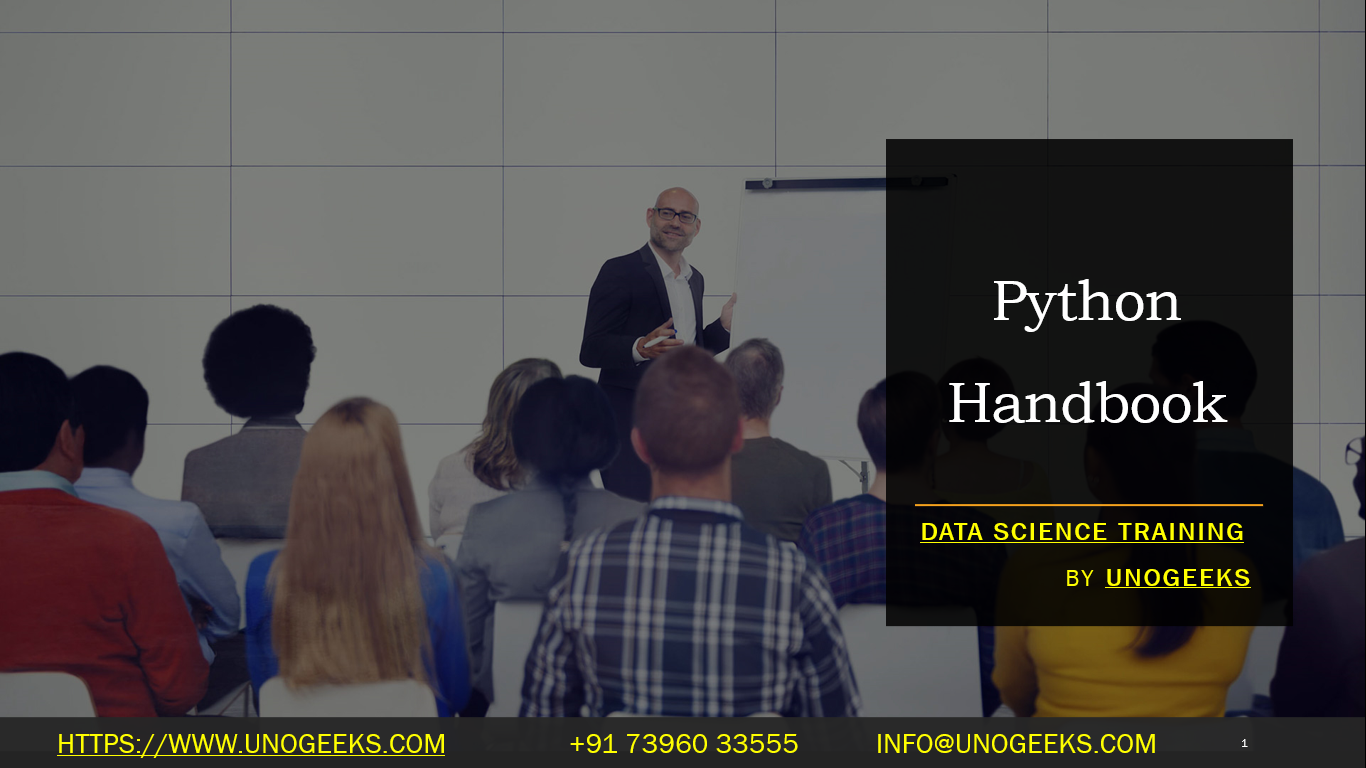Python Handbook
A Python handbook typically refers to a comprehensive reference guide or resource that covers various aspects of the Python programming language. Python handbooks are useful for both beginners who are learning Python and experienced developers who want a quick reference for Python-related concepts, syntax, libraries, and best practices. Here’s what you can typically expect to find in a Python handbook:
Introduction to Python:
- An overview of Python, its history, and its popularity in the programming community.
- Installation instructions for Python and various development environments (IDEs).
Python Basics:
- An introduction to Python syntax, data types (e.g., integers, floats, strings), variables, and operators.
- Control structures such as loops (for and while) and conditional statements (if, else, elif).
Functions and Modules:
- How to define functions in Python, pass arguments, and return values.
- An explanation of Python modules and how to import and use them in your programs.
Data Structures:
- Coverage of data structures like lists, tuples, dictionaries, and sets.
- Common operations and methods for working with these data structures.
File Handling:
- How to open, read, write, and close files in Python.
- Techniques for working with CSV, JSON, and other file formats.
Exception Handling:
- Handling errors and exceptions using try-except blocks.
- Best practices for dealing with exceptions in Python programs.
Object-Oriented Programming (OOP):
- An introduction to OOP concepts in Python, including classes, objects, inheritance, and polymorphism.
- How to create and use classes in Python.
Standard Library:
- An overview of Python’s extensive standard library, which includes modules for tasks like working with dates and times, regular expressions, and more.
Third-Party Libraries:
- An introduction to popular third-party libraries and frameworks for Python, such as NumPy, pandas, Matplotlib, and TensorFlow.
Best Practices:
- Coding conventions and best practices for writing clean, readable, and maintainable Python code.
- Recommendations for code organization, commenting, and documentation.
Advanced Topics:
- Advanced Python features and techniques, including generators, decorators, context managers, and metaclasses.
Debugging and Testing:
- Strategies and tools for debugging Python code.
- How to write and run unit tests using frameworks like unittest and pytest.
Python Web Development (Optional):
- An overview of web frameworks like Flask and Django for building web applications with Python.
Python for Data Science (Optional):
- An introduction to using Python for data analysis, machine learning, and data visualization.
Community and Resources:
- Information on Python communities, forums, documentation, and other resources for further learning.
Data Science Training Demo Day 1 Video:
Conclusion:
Unogeeks is the No.1 IT Training Institute for Data Science Training. Anyone Disagree? Please drop in a comment
You can check out our other latest blogs on Data Science here – Data Science Blogs
You can check out our Best In Class Data Science Training Details here – Data Science Training

———————————-
For Training inquiries:
Call/Whatsapp: +91 73960 33555
Mail us at: info@unogeeks.com
Our Website ➜ https://unogeeks.com
Follow us:
Instagram: https://www.instagram.com/unogeeks
Facebook:https://www.facebook.com/UnogeeksSoftwareTrainingInstitute
Twitter: https://twitter.com/unogeeks
